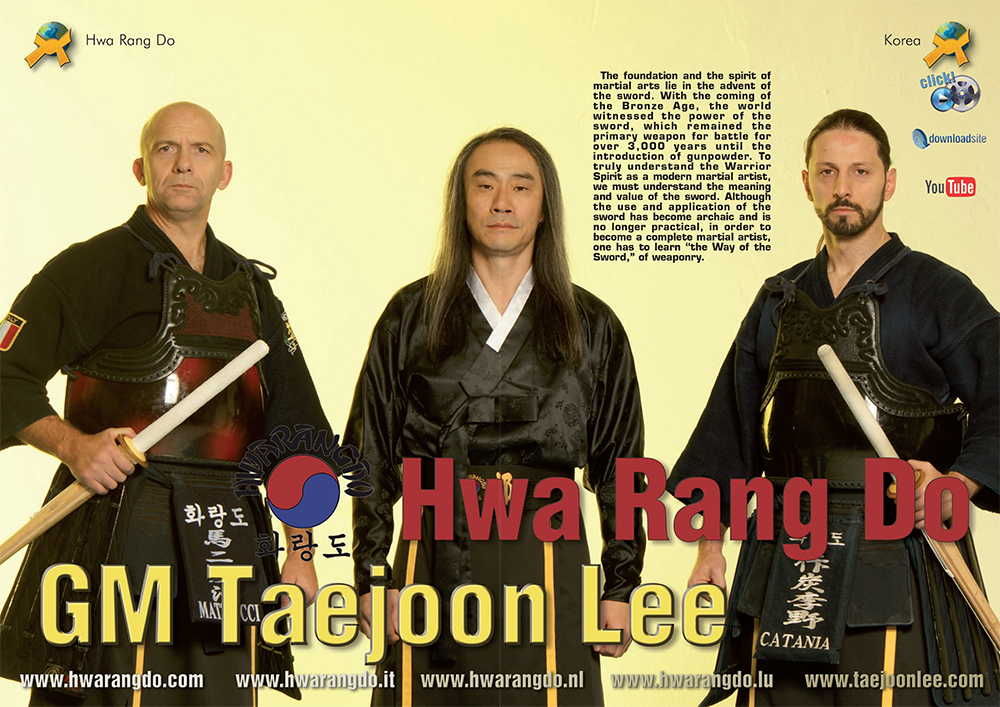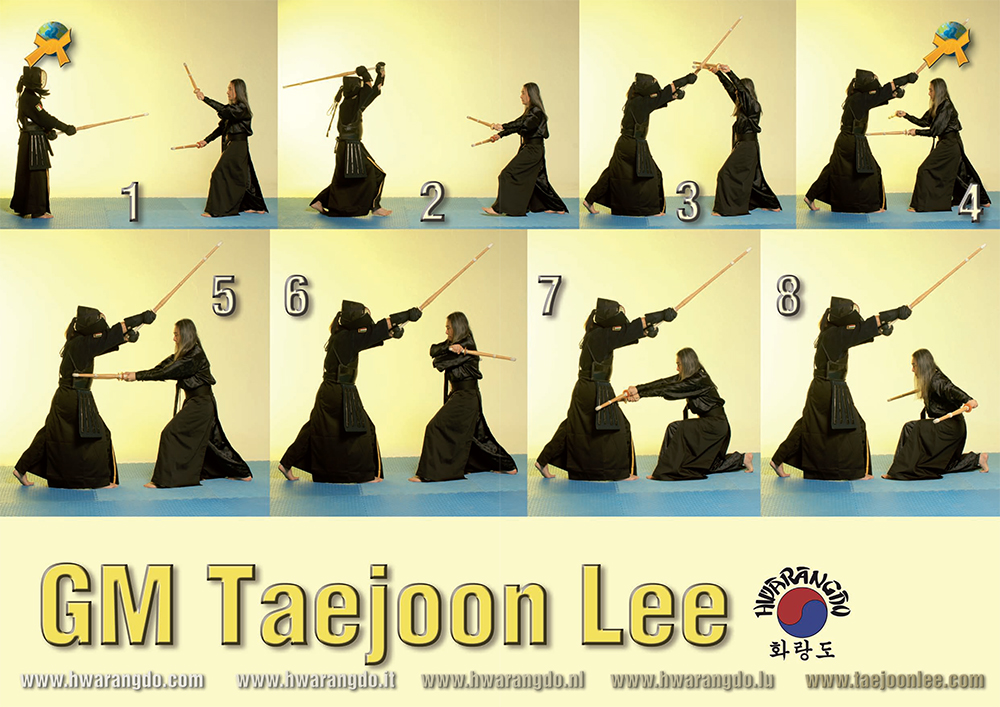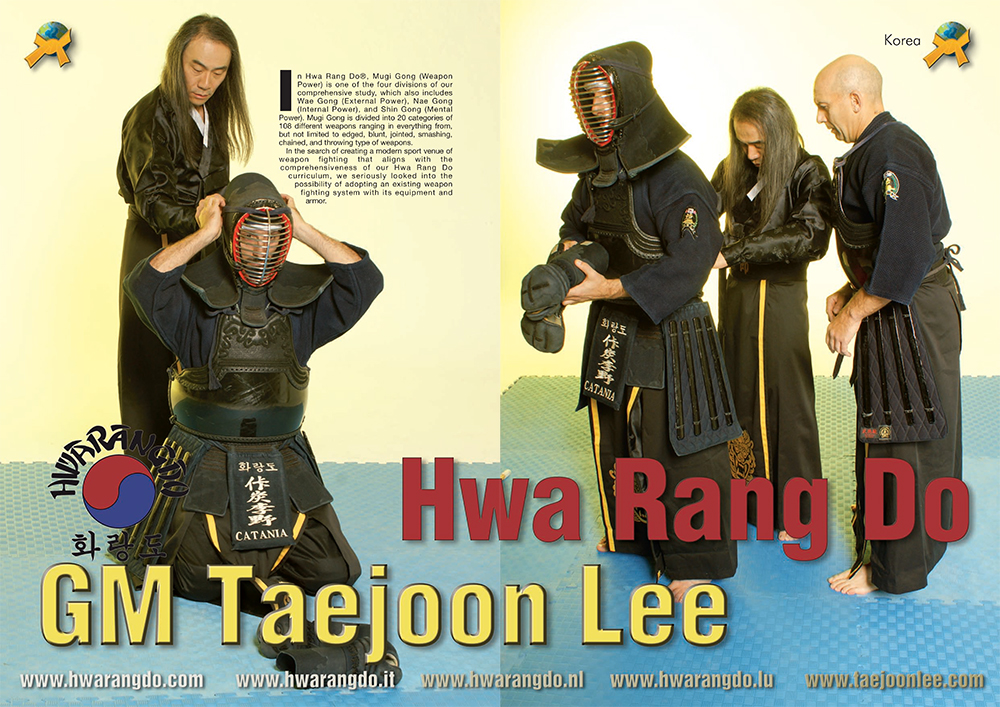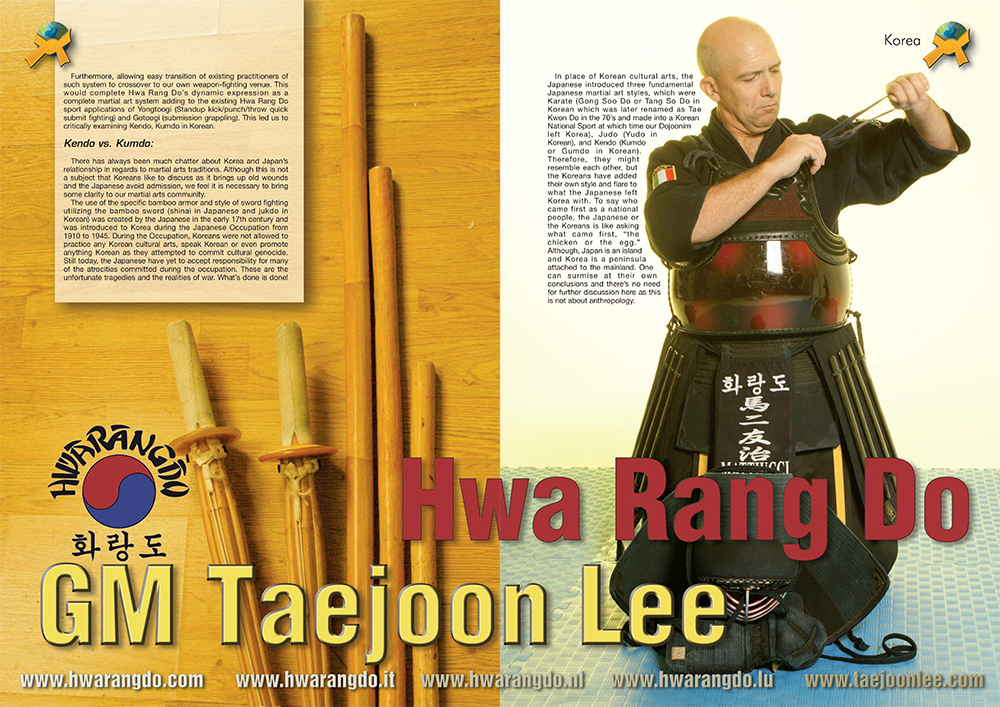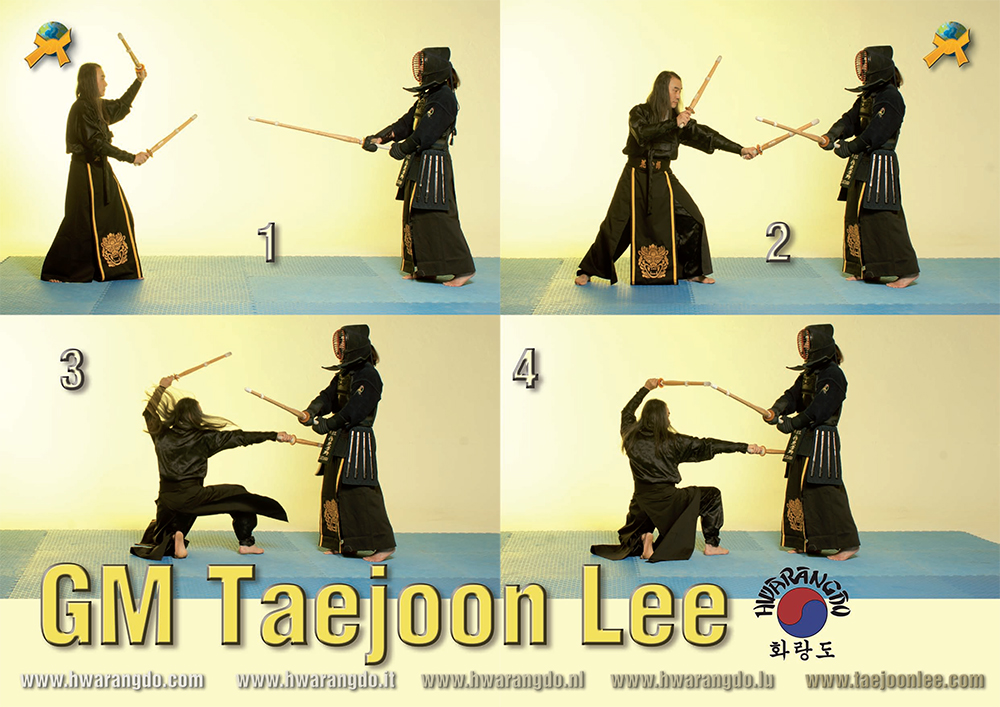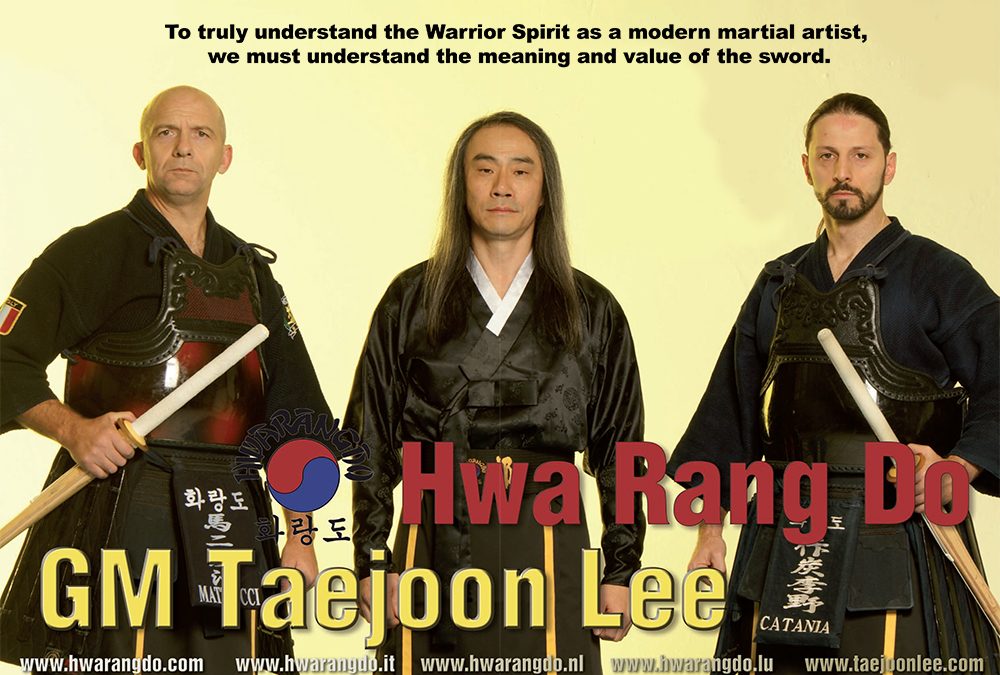Gumtoogi – Hwa Rang Do® Sword Fighting Method Part 1
Published Budo International June 2018 Issue
By: Grandmaster Taejoon Lee
The foundation and the spirit of martial arts lie in the advent of the sword. With the coming of the Bronze Age, the world witnessed the power of the sword, which remained the primary weapon for battle for over 3,000 years until the introduction of gunpowder. To truly understand the Warrior Spirit as a modern martial artist, we must understand the meaning and value of the sword. Although the use and application of the sword has become archaic and is no longer practical, in order to become a complete martial artist, one has to learn “the Way of the Sword,” of weaponry.
In Hwa Rang Do®, Mugi Gong (Weapon Power) is one of the four divisions of our comprehensive study, which also includes Wae Gong (External Power), Nae Gong (Internal Power), and Shin Gong (Mental Power). Mugi Gong is divided into 20 categories of 108 different weapons ranging in everything from, but not limited to edged, blunt, jointed, smashing, chained, and throwing type of weapons.
In the search of creating a modern sport venue of weapon fighting that aligns with the comprehensiveness of our Hwa Rang Do curriculum, we seriously looked into the possibility of adopting an existing weapon fighting system with its equipment and armor. Furthermore, allowing easy transition of existing practitioners of such system to crossover to our own weapon-fighting venue. This would complete Hwa Rang Do’s dynamic expression as a complete martial art system adding to the existing Hwa Rang Do sport applications of Yongtoogi (Standup kick/punch/throw quick submit fighting) and Gotoogi (submission grappling). This led us to critically examining Kendo, Kumdo in Korean.
Kendo vs. Kumdo:
There has always been much chatter about Korea and Japan’s relationship in regards to martial arts traditions. Although this is not a subject that Koreans like to discuss as it brings up old wounds and the Japanese avoid admission, we feel it is necessary to bring some clarity to our martial arts community.
The use of the specific bamboo armor and style of sword fighting utilizing the bamboo sword (shinai in Japanese and jukdo in Korean) was created by the Japanese in the early 17th century and was introduced to Korea during the Japanese Occupation from 1910 to 1945. During the Occupation, Koreans were not allowed to practice any Korean cultural arts, speak Korean or even promote anything Korean as they attempted to commit cultural genocide. Still today, the Japanese have yet to accept responsibility for many of the atrocities committed during the occupation. These are the unfortunate tragedies and the realities of war. What’s done is done!
In place of Korean cultural arts, the Japanese introduced three fundamental Japanese martial art styles, which were Karate (Gong Soo Do or Tang So Do in Korean which was later renamed as Tae Kwon Do in the 70’s and made into a Korean National Sport at which time our Dojoonim left Korea), Judo (Yudo in Korean), and Kendo (Kumdo or Gumdo in Korean). Therefore, they might resemble each other, but the Koreans have added their own style and flare to what the Japanese left Korea with. To say who came first as a national people, the Japanese or the Koreans is like asking what came first, “the chicken or the egg.” Although, Japan is an island and Korea is a peninsula attached to the mainland. One can surmise at their own conclusions and there’s no need for further discussion here as this is not about anthropology.
